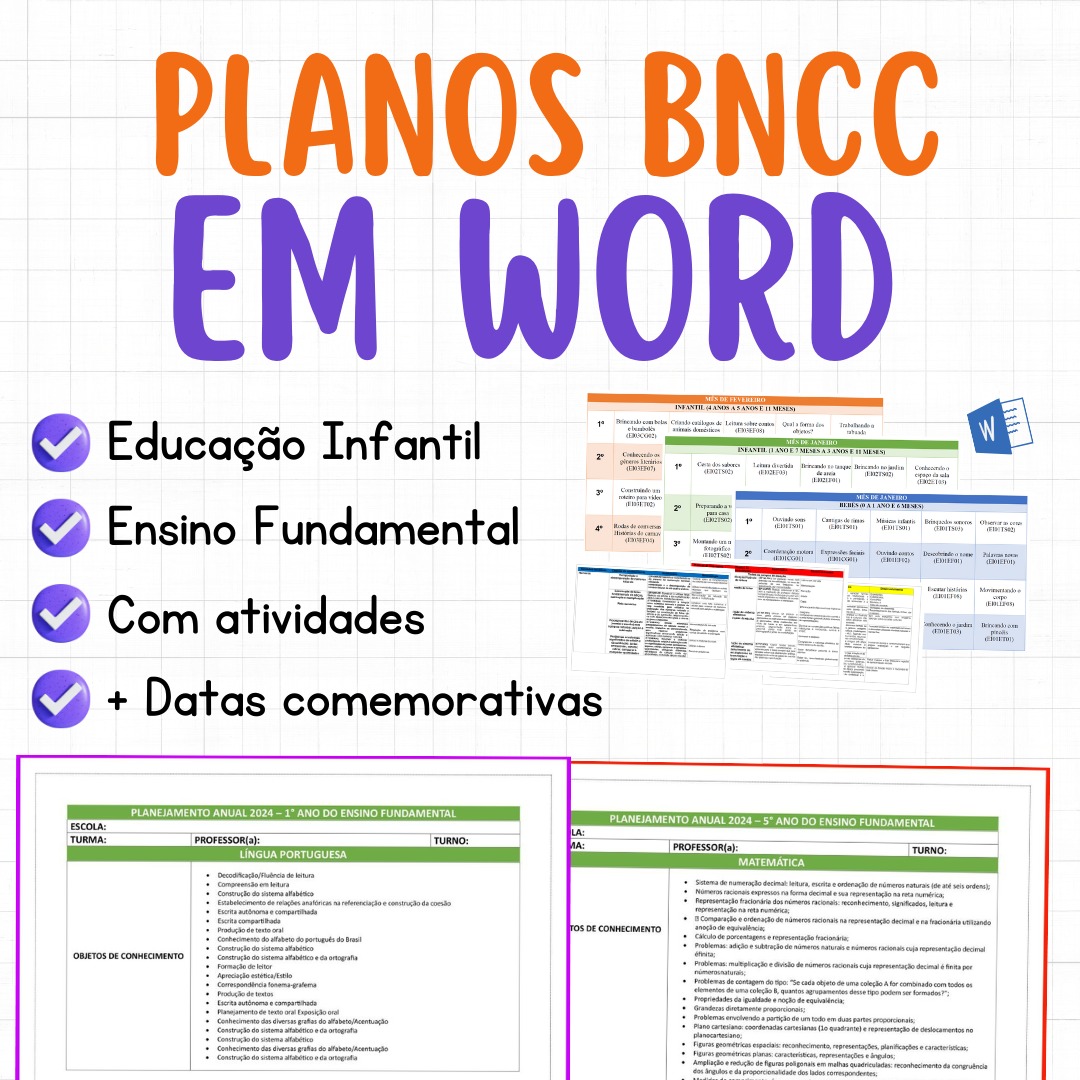Lesson plan: Tens and Units for 1st Year
Goals
Estimated time: 10 – 15 minutes
Main objectives:
- Understand the concept of tens and units.
- Recognize the relationship between tens and units in the formation of numbers.
- Use concrete material to represent and compare numbers of two orders.
- Carry out practical activities to identify and separate tens and units in numbers.
Secondary objectives:
- Develop logical reasoning and the ability to abstract.
- Stimulate autonomy and the resolution of simple mathematical problems.
- Encourage collaboration and the exchange of ideas among students.
- Promote students' confidence in solving exercises involving tens and units.
- Reinforce the importance of organization and method in solving mathematical problems.
Introduction
Time estimate: 15 – 20 minutes
To start the class, the teacher will introduce students to the concept of tens and units, using concrete material, such as base 10 blocks or ice cream sticks, to facilitate visualization. Interactive activities will be carried out for students to identify and compare numbers of two orders.
The teacher will explain the importance of understanding the relationship between tens and units in the formation of numbers and how this facilitates understanding and basic mathematical operations.
Simple challenges will be proposed for students to solve together, encouraging participation and the exchange of ideas. Examples of everyday situations involving tens and units will be presented to contextualize learning.
Development
Time estimate: 50 – 60 minutes
Review of previous knowledge
Estimated time: 10 – 15 minutes
A brief review of the concepts of simple addition and subtraction will be made, using the separation of tens and units to facilitate problem solving.
Presentation of the theory
Time estimate: 15 – 20 minutes
The teacher will explain the relationship between tens and units, demonstrating how the position of the digits influences the value of a number. Practical examples and exercises will be presented for students to practice identifying tens and units in two-order numbers.
Visual resources, such as posters and slides, will be used to help explain and consolidate the content.
Practical activities
Time estimate: 20 – 25 minutes
Activity 1: Separating tens and units
Students will be divided into pairs and will receive cards with numbers of two orders. They must separate the ten and the unit using concrete material and represent each part visually.
Activity 2: Comparing numbers
Students will receive cards with different numbers in two orders and must organize them in ascending or descending order, comparing the tens and units of each number.
Return
Time estimate: 15 – 20 minutes
Learning Check
Time estimate: 5 – 10 minutes
Students will be invited to present solutions to the practical activities carried out, explaining how they identified the ten and unit in each number. The teacher will ask questions to check understanding of the concepts covered.
Student feedback
Time estimate: 5 – 10 minutes
Students will be encouraged to share their impressions of the class, highlighting what they liked most and if they encountered any difficulties. The teacher will value students' contributions and clarify possible doubts.
Homework
Time estimate: 5 minutes
Students will be given a list of exercises to practice identifying tens and units in two-order numbers. They must solve the exercises at home and bring the answers to the next class.
Conclusion
Estimated time: 10 – 15 minutes
The teacher will summarize the main points covered in class, reinforcing the importance of understanding the relationship between tens and units in the formation of numbers. The practical applications of this knowledge in everyday life will be highlighted and how it facilitates the resolution of simple mathematical problems.
Students will be encouraged to continue practicing identifying tens and units in two-order numbers and exploring new mathematical challenges. The teacher will emphasize the importance of organization and concentration when solving exercises involving these concepts.





